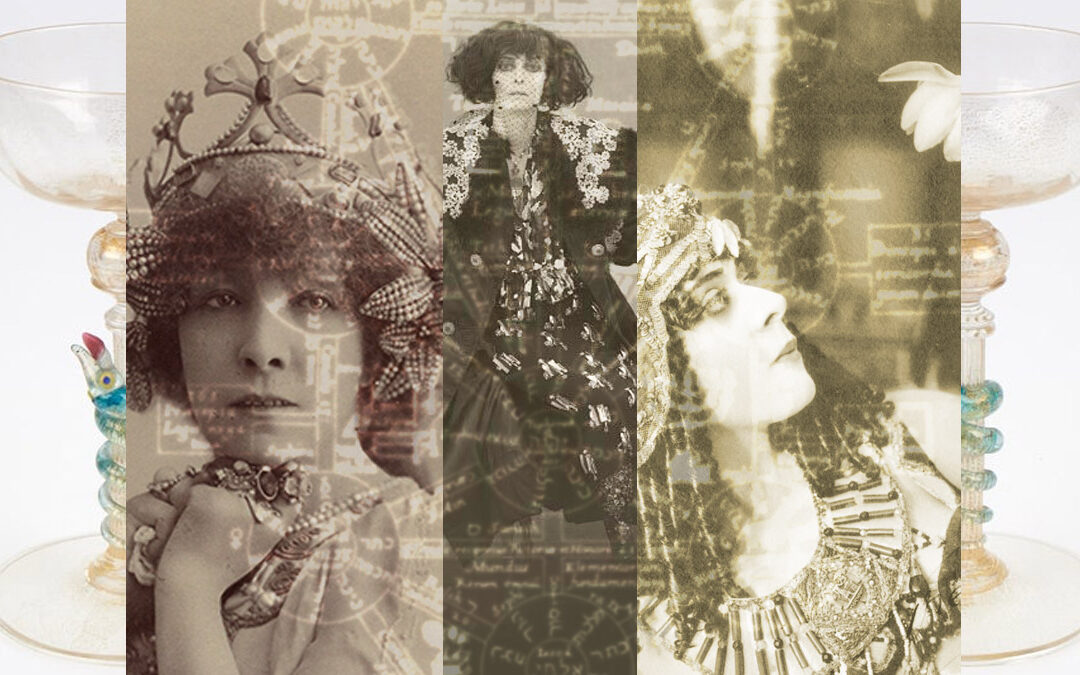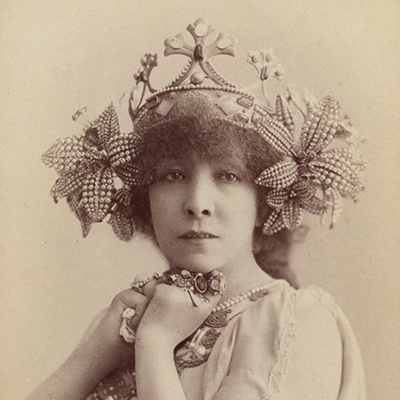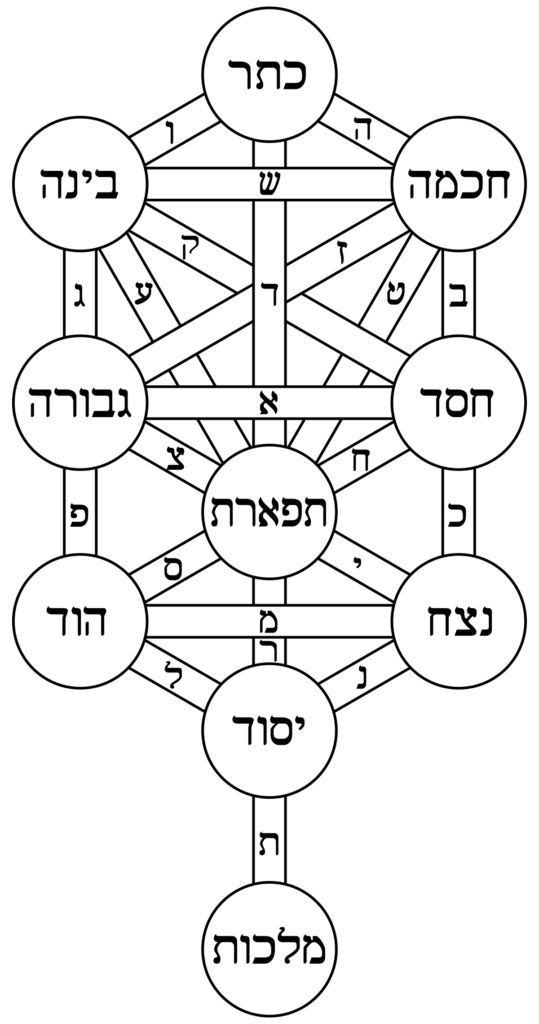
Podcast: Play in new window | Download
Image note – serpent wine glass for header image from Simon Curtis Antiques, with thanks.
This week we return to Lilith with Part 2 of a very long conversation about the mother of demons. We open in media res,talking about incantation bowls, a fairly frequent source of demonological lore. These were used as traps for demons, spiralling prayers/abjurations trap demons in their sometimes amusingly cartoonish illustrations. We talked a bit about them in our last show notes (the one at the right is from a rich and Lilith-bearing article from The Gemara). These bowls were commissioned as wards, and were apparently some of the only written material from the Jewish faith from about 500 BCE to 800 AD when the Talmud was a commonly copied document.) They include some of the legalities for divorce, scripture and rabbinic teachings, blessings, and, of course, incantations. There’s actually a surprising amount of Jewish law in them (and the article talks about legal wizardry in a manner that screams out to be made into a historical fantasy novel).
In hindsight (Jacob says) I wish I’d done more research on the incantation bowls, I hadn’t realized they had a role beyond being a somewhat cute cultural artifact with demon cartoons. Live and learn!
Here’s the full Lilith abjuration quote that Jacob rattles off later in the episode, from the Gemera article:
““Be you fettered and bound, giants of the darkness, and fettered be your bodies with the strong chains with which smiths fetter monsters. Fettered be your magic and the illusions you create. Fettered be your wives, the Liliths, the salamanders, those deformed figures that are ugly, perverted and misshapen, whose appearance and constant chattering no-one can tolerate.”
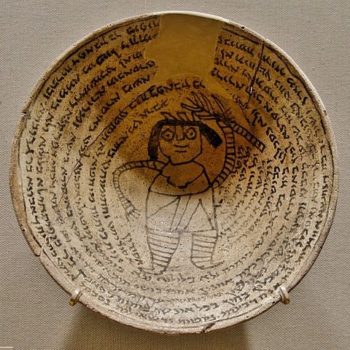
Lilith II: Return of Lilith
Aaand, back to Mesopotamia and the Huluppu Tree (again…) We’re talking about Tablet 12 of the Epic of Gilgamesh, which is an odd one out, a poem fro, ~2000 BCE sourced from some much earlier Sumerian writings, with two main movements. The second involves Gilgamesh and his best buddy/BF Enkidu, and Enkidu’s journey of no return into the underworld to get a frankly confusing artifact that was very pimportant to Gil, his Miku and Pukku (ball and drum? Rod and scepter? Board game pieces? Meat and two veg? No one knows, after 5000 years some meaning has been lost.)
In the first part, the great Goddess Inana has a very special magic tree, but it’s infested with wilderness demons, including a few Liliths. This double underlines the idea that Lilith wasn’t “Lilith,” but just a single one of the category of demons called the lilim. Anyway, we’re reiterating. “Ki-sikil-lil-la-ke,” Lila’s Maiden, “gladdener of hearts” and “maiden who screeches constantly” is touched on over at the New World Encyclopedia, along with some discussion of Lilith with bird talons for feet, ardat lili or Lilith’s handmaiden, and some references to Lilitu/Lilith as a sort of ancient succubus myth.
Karina
Karina is one of the various spirits summoned up by King Solomon, and is, besides being one of the broad categories of child-killing demons, apparently something of a shapechanger, with aspects of dogs, owls, and serpents. Those last two seem to be very common for the Lilith model of demonesses, though the dogs may hearken, or barken, back to the hyenas and howlers from Isaiah.
From Lilith – The First Eve, Historical and Psychological Aspects of the Dark Feminine by Siegmund Hurwitz, Karina is a word that means something along the lines of “female companion,” related to the Karin, or “male companion.” The spirit is arabic in origin, possibly see also the Qarinah spirit, which is an invisible night-seducer-type, which also tends to take the form of a domesticated animal. At least when it’s not seducing someone in their dreams. I don’t know.
She has this to say about herself:
““I am the Karina. I make discord between man and wife. I cause the woman to have miscarriages. I make her infertile. I make men sterile. I fill married men with love for the wives of other men, married women with love for the husbands of other women. In short, I do the opposite of whatever makes married couples happy.”
Silver Age Liliths
Jacob had the chance to attend Per Faxneld’s lecture over on Morbid Anatomy, and Victoria read Satanic Feminism: Lucifer as the Liberator of Woman in Nineteenth Century Culture. Both of us were preparing for our little series on the feminine in Hell. Jacob can’t recommend this one as a book on demonology/infernology, it’s not that kind of text…though as a work on the cultural relevance of Lucifer, four stars, absolutely. Much of the discussion here is on…hmmm…embracing a sensuous, voluptuous (in the sense of abundant) lifestyle as a conscious rebellion against the patriarchy and as a way to celebrate the importance of the self for women in the 19th/early 20th century. Hope I’m not simplifying too much [says Jacob]. Lucifer, being recently embraced as the icon of pride and rebellion, seems to be used as a shorthand icon of pride not as a sin, but as a statement of the value of self in a world that seriously undervalues it. Also, there is some crazy amount of decadence and EXCELLENT accessorizing at work. Glorious.
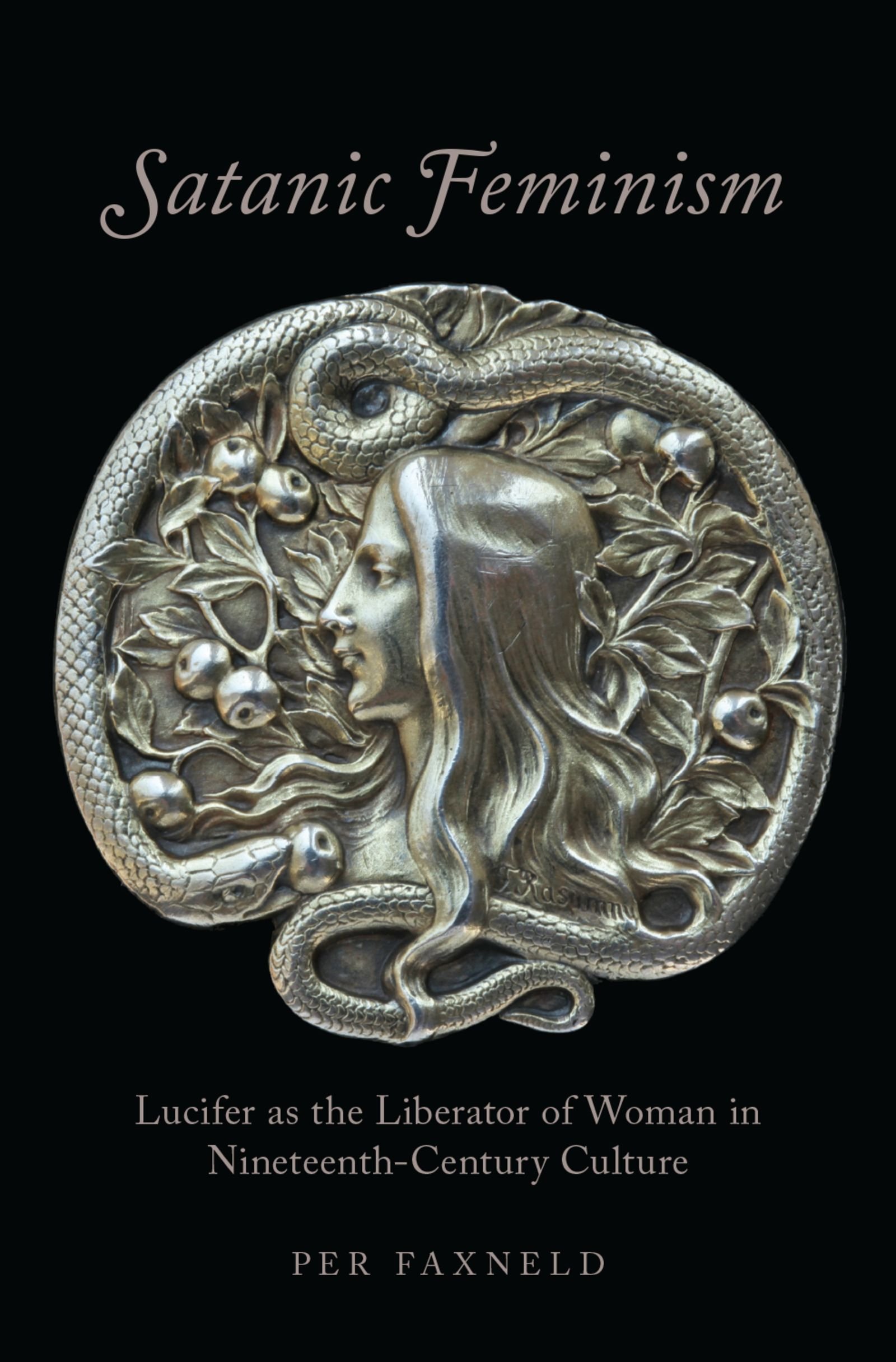
Sarah Bernhardt
(wiki) Sara Bernhardt, 1844-1923, was a French actress, thrust into that position by her family (I don’t think I’ve ever heard that before…) and she remade herself as a part of the work of becoming her stage self. By the 1870s she had truly broken out. She was a contemporary of Oscar Wilde, and took the lead role in his play, “Salome.” She, and the painter Gustave Moreau (who spent a great amount of paint on portraits of Salome, at much the same time), did much to reinvent the conception of Jewish female beauty…in part as a rebellion against the negativity that was splashed on her as a Jewish woman.. Some of her imagery had anti-Christian or satanic elements, she dabbled in a bat and serpent motif, slept in a coffin, and made a demonic self-portrait of herself. We are being incredibly reductionist here, apologies.. Crowley connection:: “upon meeting actress Sarah Bernhardt, Crowley asked her if she would like a ‘serpent’s kiss,’ whereon he bit her hand and licked up her blood.” (findagrave)
Luisa, Marchesa Casati
(wiki) It would be a pity not to use her full name: Luisa Adele Rosa Maria Amman, Marchesa Casati Stampa de Soncino. 1877-1957. Italian heiress, later wife of the Marquess Casati Stampa di Soncino, although her father was a Count, so she was likely nobility? Fabulously wealthy, and extravagantly, delightfully, eccentric. Through the 30s she was an art patron, muse, and luminary, and perhaps related to her massive art expenditures, by 1930 she had amassed a crippling debt and fled to London. Her tombstone is engraved with a quote from Antony and Cleopatra, “Age cannot wither her, nor custom stale her infinite variety.” She was buried in black and leopard skin. Perfect. The BBC discusses her in an article, “The extraordinary life of the 1920s Lady Gaga.” A hundred years later, I’m not sure we still have the technology for the level of decadence she achieved. She was known for having a love of the occult, always carrying a crystal ball and keeping wax replicas of herself. Her life, up until that part where it fell apart, was a sustained, self-created piece of art. Crowley Connection: The internet has a number of references which seem to have a common source, that Casati and Crowley had met, but the first just made the other mad. Oh well.
Theda Bara
(wiki) Of the three, Theda Bara (1885-1955) was perhaps the one most closely associated with the occult, as she was heavily promoted as an exotic Egyptian-born mystery, “the serpent of the Nile,” and encouraged to discuss the occult with the press. She was a silent movie actress, possibly the first film sex symbol. How much of her exotic occult vamp image was how the film studios managed her image, and how much was Bara herself, hard to say. But that image loomed large, the media called her the “queen of vampires,” “the wickedest woman in the world,” “the devil’s handmaiden,” and “the priestess of sin.”
It seems sad that she was immortalized in a sandwich of toast, minced ham, and pimentos. No one this magnificent should be debased like that. I can see why Dr. Faxneld neglected to mention the “sandwich” thing in his otherwise excellent lecture. Crowley Connection: None? Though there’s an interesting “six degrees of Crowley” connection, by way of screenwriter Preston Sturges: Sturge’s mother was Mary Desti Dempsey, who, somewhere between her on-again-off-again affairs with Isadora Duncan (!) and Aleister Crowley, lived briefly with Bara. So even if their lives never overlapped, there’s enough there to satisfy an inaccurate movie biography or some such.
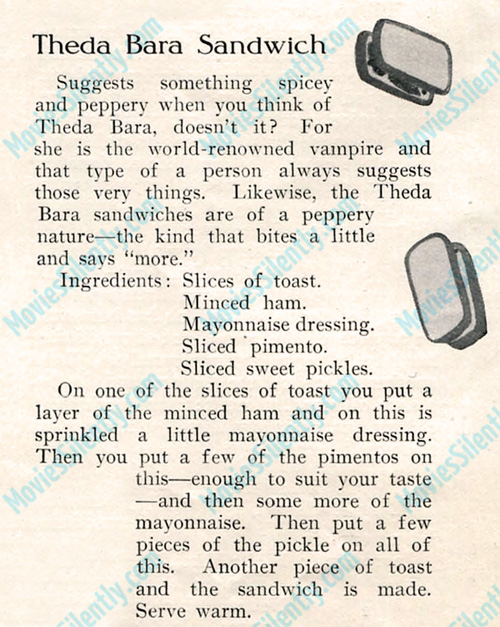
Misc Moon/Magic Goddesses
On Hecate, Circe, and Lilith:
Hecate is a three-faced Greek goddess of crossroads, night, magic, necromancy, and ghosts. She might or might not haveoriginally been an aspect of Artemis/Apollo, but was strong enough ultimately to be a fairly major godess. She may or may not have been the same entity as Hqt/Heqet, an Egyptian fertility/magic goddess. which would give her an age that predates Greece by a thousand or so years.
Circe (pronounced “Kirke,” rhymes with “turkey,” just an FYI) is a minor goddess, maybe some kind of nymph, sometimes a daughter of Hecate. Interestingly, her sister was the wife of king Minos, which makes her the Minotaur’s auntie. According to some geneologies that makes the minotaur’s great-grandfather the sun. This isn’t really important, Jacob just really likes minotaurs.
Circe has some interesting elements that might tie her to the Lilith myth specifically – she’s kind of frumpy, and birdlike but not in a good way…harsh-voiced and dark, and her name may have come from Greek-Latin transliteration “Κιρκη” (kirke) meaning “bird. ” Lilith is very birdish and sometimes harsh-voiced too, so there’s some thematic ties there.
Are they the “same”? It’s very, very easy to play mythology connect-the-dots and get something that is factually accurate but still entirely wrong. If one commentator says “X=Y” that doesn’t mean that X universally equals Y in all instances of X, only that it does in one story (and every story that came after it). Hecate has been associated with the Lamia, and sometimes identified as the same creature. Lilith “is” a goddess, a demon, Adam’s wife, and both a devourer of children and protector of same…and the category of demons called “liliths” has been identified with, and shares a common ancestry with, certain antecedents of the monster called the Lamia. And Circe “is” the daughter of Helios, but Hecate also “is” the daughter of Helios, and Circe “is” Hecate’s daughter… So…a net.researcher could probably connect enough dots to say that Lilith, Circe, and Hecate “are” sisters, in a sense, but that feels disingenuous. All three are dark female goddesses/spirits with lunar aspects, connections to fertility and motherhood, and have been described as patron spirits of witches. There’s a number of net.articles saying that the three are the “same,” but that feels like a Golden Bough-esque modern insistence that similarity equals identification. Separated by 2000 years, it seems misleading to say that they’re the same deity wearing different masks, but you could probably put statues of them on the same altar.
Aeaea “is” the island Circe hails from, and in at least one dictionary, the “aeaean arts” are magic and necromancy, although it more properly means “of or pertaining to the island of Aeaea,” and really shouldn’t be used in Scrabble. Jacob almost never wins Scrabble games, but very few people challenge him on weird words, which is a moral victory.
Life in Quotations and other ungoogleables
Ernst Kris (1900-1957) was a psychoanalyst and art historian, and among other things wrote on the art of charicature, so it kind of fits that he’d be a part of a a somewhat tropey psychological concept like “life in quotations.” Juan Felipe Hernandez discusses the idea in “Myth and Performance in Thomas Mann,” that older biographies (particularly those of artists) are characterized by certain repeatedc motifs and patterns…not necessarily because of the biographers, but because the the artist lives their life as a sort of performance, a sort of self-mythologizing: a “ceremonial repetition of archetypical situations which places the individual life in a larger context.”
So…the artist tends to make a story out of their own lives, and then lives accordingly.
The same idea seems to have been used to discuss racial stereotpying, how someone feels their life has been reduced (or at least simplified) into a series of tropes.
Cultural Hegemony is a sort of “secret masters of culture” idea that cultural values and norms are not precisely an organic concept that serves all parties equally, but are instead something that serves the ruling class (Nietzsche talks about how the ten commandments inclusion of “do not steal” and “do not kill” reinforce the rulership of the monied and landed upper class). Successfully rebelling against the cultural elite becomes much more challenging when the entire worldview a person is born into serves that cultural elite.
We should get back to demonology, it’s much more lighthearted.
Breaking the Mood With Kabbalah
Jacob here, apologizing for an extremely long ramble. I strongly recommend the book Lilith: The First Eve by Sigmund Hurwitz. The first half was just excellent, a deep deep dive on Lilith mythology with a heavy slice of Kaballah, and I think that most of this material at least began with this book. The second half was Jungian archetypes, which isn’t my cup of tea, not qualified to judge.
The Sefirot are…uh…ten aspects of God the kabbalah which are extremely important, if you’re into them. I’m left with a vague flavor of unnecessarily esoteric occultism, but these ten aspects of god and the soap opera of strange connections and permutations between them tell a variety of stories of how God’s power manifests in the universe. in the diagram here, I spend a fair bit of time on the bottom node, Malkuth/Kingship/the presence of God, and Tifaret, the radiance and beauty of God, two nodes up the tree: The radiance of the sun, reflected in the moon.
The Qliphoth are an imperfect reflection of the tree of life, not “evil” per se, but a broken reflection, which over the years (and I think mostly in this century) have become something like the evil twin of the Sefirot, when someone gave them the evil with three “e”s name of the “tree of Death.” I don’t personally think what little I know of the Kabballah backs that interpretation up at all, but that puts us back into what “true” means in mythology. Theomagica.com has a nice article that tours the idea of the dark side of creation’s energy.

As long as we’re on pointless asides, “Don’t let THEM immanentize the Eschaton” is one of the banners of the Discordian, chaos-worshipping parody faith. It’s an interesting idea that echos “life in quotations,” but on a global level. “The church”, or certain fundamentalist political groups that lean heavily on the church, tends to embrace the idea that the coming of the kingdom of God is a good thing, but it is, in a sense, the end of the world, which according to the bible will go very badly for all but about .0019% of the world’s population, and is, therefore, something that should not be encouraged unless you are very sure of your heavenly meal ticket. Politics and positions that embrace that end-times mentality like it’s a good thing immanentize the Eschaton (the end of the world). This was very briefly a counter-culture catch phrase, Hail Eris.

